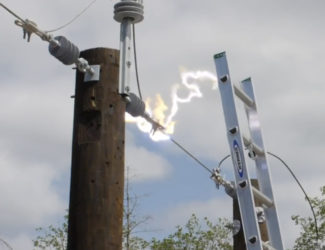
Rates & fees
The PUD’s Board of Commissioners approved a revenue adjustment of 5.8% effective April 1. For the typical residential customer, the base charge has increased from 35 cents per day to 59 cents. The usage charge remains relatively flat at 10.26 cents per kilowatt-hour. Customers should anticipate a bill increase of $6 per month. For PUD small business customers, the rate increase only affects the customer charge, meaning a bill increase of approximately $10 per month. For specifics, please visit the Electric rates page.
Electric rates
Residential base charge
Electric rates for other services
Electric service fees
Frequently asked questions
What do rates cover?
Rates include the cost of purchasing or producing power (energy charge); the cost of getting that power to your home or business, including not only equipment but labor and facilities (distribution charge), and administrative overhead costs (customer charge).
Most rates in the region include both energy and distribution costs together. One of the major changes in deregulation is the separation of these costs (often referred to as “unbundling” of rates). Some utilities charge a basic monthly customer charge on top of energy-usage/distribution charges.
Rates differ from residential to commercial to large industrial customers largely because of the costs it involves to get power to each customer classification.
Each class has the same amount of energy charge built into its rate structure. But it’s cheaper to deliver power to one large industrial customer than to several small homes because often the large industrial customer has its own substation and takes power at a much higher voltage than residential customers who must have the voltage lowered for them to use in their households.
Delivering power to our growing customer base requires many substations, poles, distribution wires, switching stations, transformers, etc. That’s basically why large industrial customers have lower rates than residential customers.
How do PUD residential rates compare to other regional rates?
This chart compares residential bills from various regional utilities. Based on 1,000 kilowatt-hours (average rates, as of April 2023; includes customer charges where applicable)
| Portland General Electric | $137.74 |
| Seattle City Light | $130.87 |
| Grays Harbor PUD | $130.10 |
| Puget Sound Energy | $126.48 |
| Klickitat | $120.03 |
| Snohomish PUD | $107.74 |
| Tacoma Power | $103.21 |
| Clark PUD | $93.60 |
| Cowlitz PUD | $91.70 |







